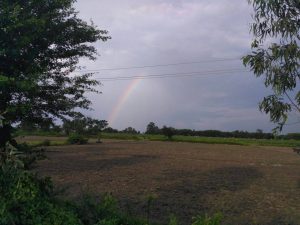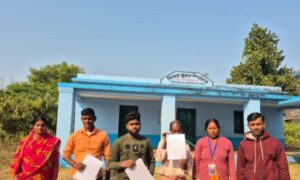
Image: Outline India
By Amarnath Tripathi
Climate change has increasingly become an interesting area for researchers in India but most studies focus either on the change in climatic variables or on the impact of climate change. Only a few studies assess vulnerability to climate change. A study was attempted to fulfill this knowledge gap by focusing on an inland state like Uttar Pradesh, which is poor in terms of per capita income but a leading State in terms of India’s agricultural productivity. Compared to other states, it has a strong agricultural base with the most fertile landmasses and a well-connected river network and this enables it to play a significant role in the country’s food and nutrition security programme. However, the State’s agriculture is at the same time highly vulnerable to climate.
A study to understand farmers’ perception of climate change and its associated risks suggests that farmers are aware of changes in climatic variables, especially increasing temperature and changing the seasonal pattern, and climate change impacts, particularly declining crop productivity, increasing the cost of cultivation, and livelihood insecurity. While farming experience seems to be the major factor in farmers’ perception of climate change, this study has observed that the print media contributes significantly to such perception. Despite this, it may not be instrumental in spreading climate change information, as few farmers read newspapers or other print media offerings, because of high illiteracy or poor education and limited interest in print media. But most farmers use mobile phones, so sending farmers climate information and advice through text and voice messages could be a better option.
Farmers are changing their agriculture and farming practices to deal with socioeconomic changes. Some of these changes include changing sowing and harvesting timing, cultivation of crops of short maturity period, inter-cropping, changing cropping pattern, investment in irrigation, agroforestry. So, it may be concluded that farmers are implicitly taking initiatives to adapt climate change.
There have been several changes observed in agriculture practices in villages. These changes include more use of ground water for irrigation, use of PVC pipes to carry water into farms, change in timing of crop sowing and harvesting, more use of high yield variety of crops, more use of short-duration cultivars, started growing short-duration crops, mix-cropping (inter-cropping), agroforestry, and crop diversification. Farmers have diversified their livelihood from farm to non-farm activities. Some members of farmer households were found working in nearby urban centres as salesmen and security guards. Few of them have opened their own shops in the village. All these changes in agriculture and farming practices and livelihood pattern are mainly triggered by social and economic factors.
It suggests that farmers have the inclination to adapt to climate change and there are sufficient support systems available in the village that support farmers in adopting new technologies and practices in agriculture. For example, the social network effect and collective activities. In sample villages, the study has noted a strong network effect; farmers learn from other progressive farmers and from collective activities where farmers cooperate with each other to resolve common problems like shortage of labour.
It is important to note that all of these changes are being adopted to secure better income rather than adapt to climate change. It suggests that farmers unintentionally adapt to climate change by considering several changes in agriculture practices.
Addressing climate change has now become essential in the policy domain. Agriculture – which provides food, raw materials, and livelihoods – is under great threat from climate change.

(The author is assistant professor, Institute of Economic Growth, Delhi University Enclave, Delhi. He can be contacted at amarnath@iegindia.org)


















